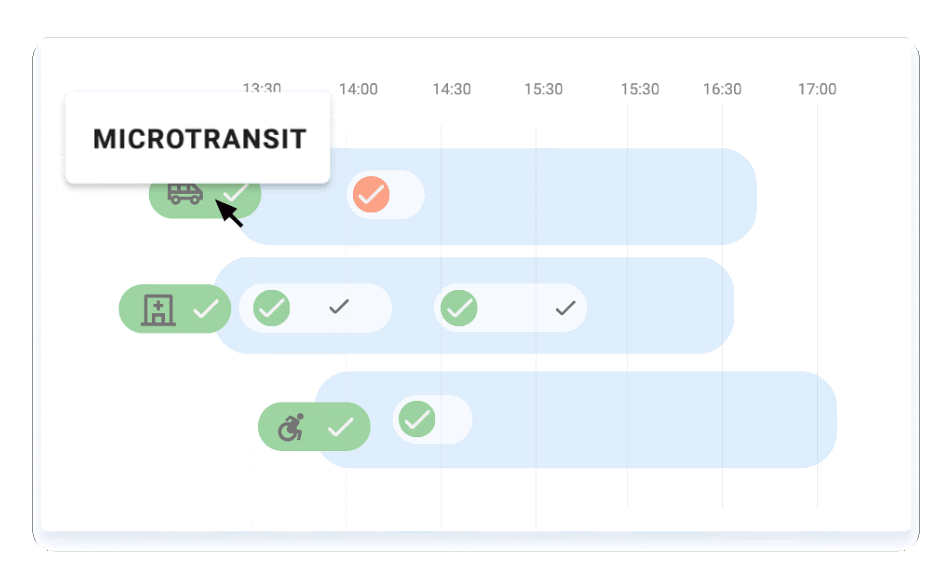When you hear the phrase “the future of public transit,” what comes to mind? For an increasing number of transit agencies and cities, the answer is integrated: Fully-integrated transit systems with all mobility options consolidated into one app and entirely owned and operated by the centralized transit agency. We call it Integrated Mobility Solutions, or IMS, for short. For operators, integrated mobility means a simplifying and streamlining of all systems with fewer management hours required and fewer vehicle hours on the road. For riders, it means seeing all of your transportation options in one place. Simply put, integrated mobility enables a new kind of flexibility for transportation systems. Integrated mobility is modular and, by nature, can be adapted to fit a variety of transit needs. Integrated mobility can be applied in order to consolidate existing operations (i.e. a city or agency operates a paratransit service and a microtransit service and wants to transition to a single technology vendor for combined visibility and reduced overhead) or launch new modes (i.e. a city or agency wants to start a new microtransit service that’s able to easily integrate with existing fixed routes). While these goals are a bit different, the technical solution is the same.
That’s because an integrated mobility solution is modular and, by nature, can be adapted to fit a variety of transit needs. It can also grow and expand over time, at the pace an operator wishes. Now, let’s look closer at what exactly integrated mobility means for both passengers and transit operators.

Autonomy for agencies.
At its core, integrated transit offers a synthesized system for dispatchers, with full visibility into all of their services from one backend and a singular set of tools at their disposal. This provides direct and indirect cost savings: A reduced need for multiple dispatchers and systems immediately translates to lower overhead for cities and agencies, and end-to-end management enables real-time data collection, which informs proper supply and demand planning.
Integrated transit systems can improve efficiency even further through fleet sharing. Sharing fleets between services (paratransit and microtransit, for instance) allows agencies and cities to invest in fewer vehicles and driver hours, even when establishing new services. In turn, a shared fleet keeps drivers engaged and utilization high by minimizing unutilized vehicle hours.
Visibility for riders.
By funneling all transit options into one rider app, integrated mobility systems empower those they serve to fully understand all of their options, and then choose which one best serves their desired trip at any point in time. Riders can consider all of the modes their local transportation provider offers — whether that’s fixed route, microtransit, paratransit, non-emergency medical transportation, or a grouping of those services — and then select one that fits their schedule, budget, personal preferences, and eligibility.
On the note of personal preference, integrated networks that include microtransit also have a much greater chance of appealing to people who usually opt for single-occupancy vehicles, ultimately pulling them onto buses and trains, too. These individuals might find themselves drawn to the similarities between microtransit and private rideshare services they’re already comfortable with. And when the app they use to book their microtransit trip also displays an available fixed route option, these previously transit-averse riders are automatically exposed to — and therefore more likely to eventually test out — more traditional forms of public transit.
How to get started.
In the end, there are many ways to configure a network that fits into the umbrella of "integrated mobility." Integration on the operator side and the rider-facing side are two distinct, though related, projects, and they don’t have to be undertaken together. And no matter if you’re employing both elements or just one, the process can be implemented in stages, so all parties have the time and space to adapt.
Eager to learn more? We’ve rounded up a few examples of integrated mobility at work across the country, so you can see what this flexible approach to transit actually looks like for different communities.




